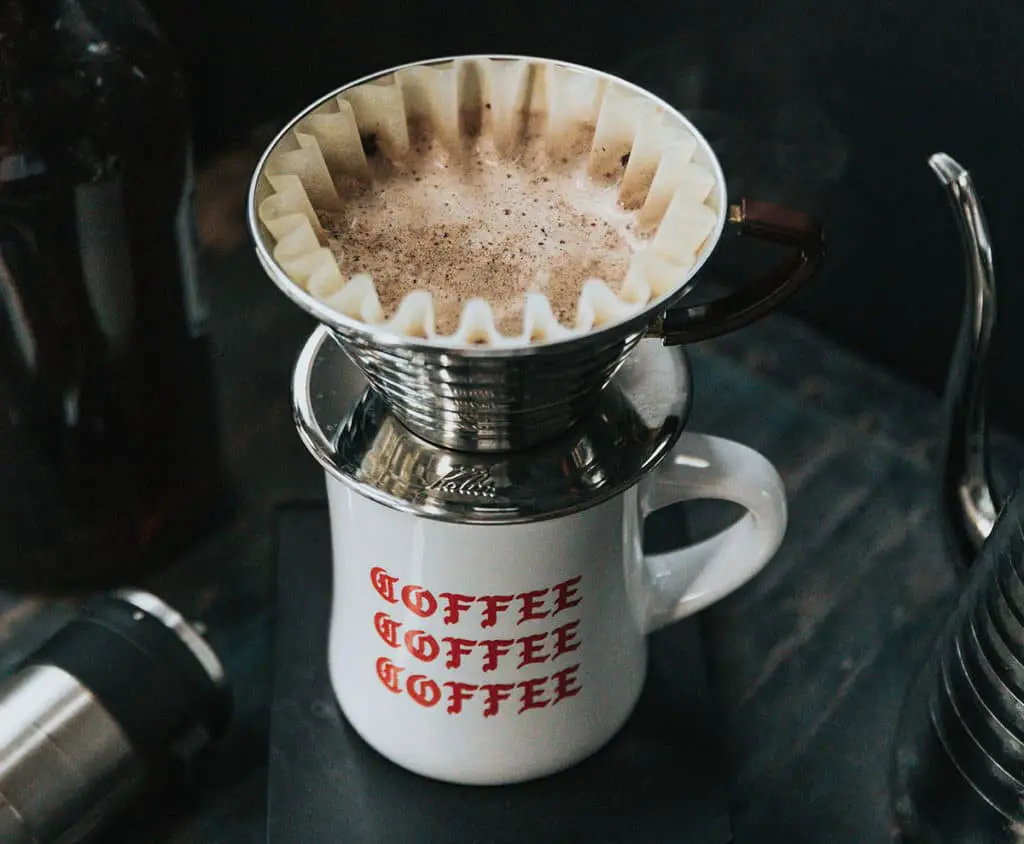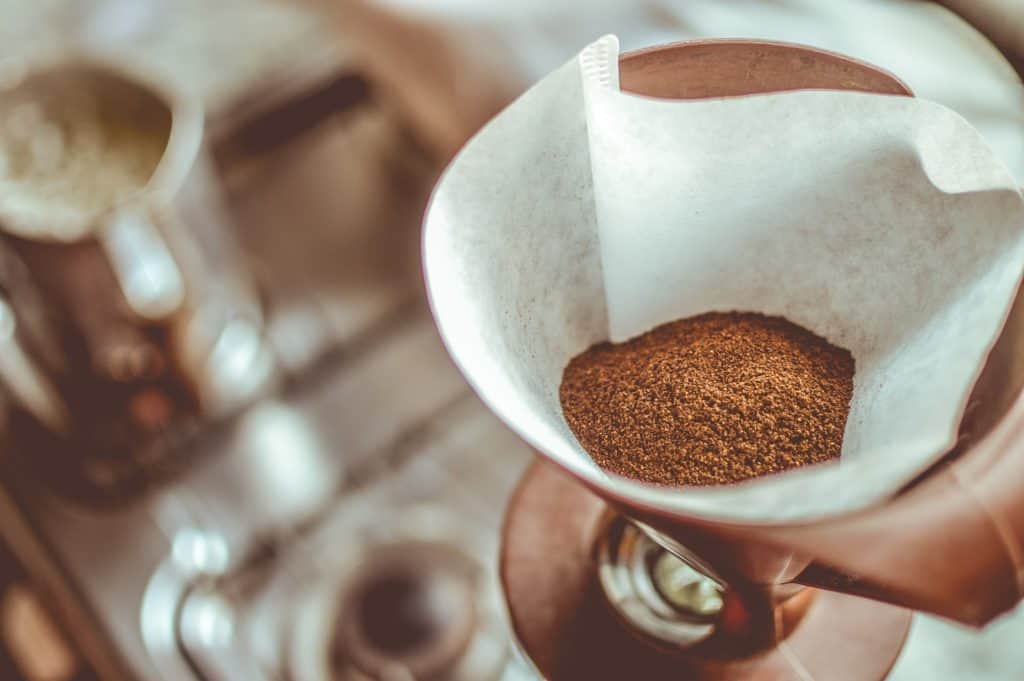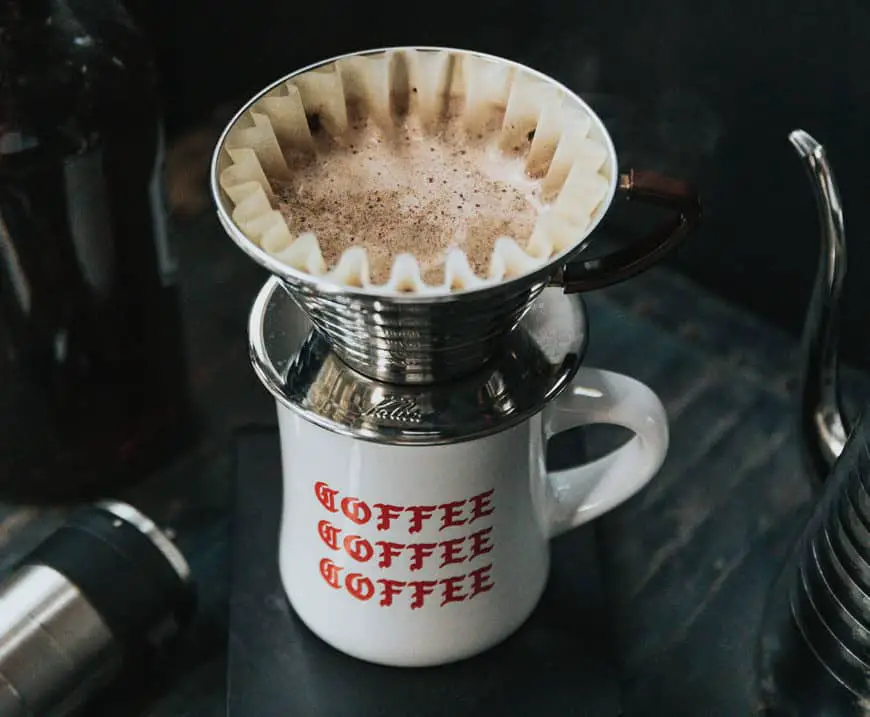
Pour over coffee is a simple and elegant way to brew a cup of coffee, and it’s become increasingly popular in recent years. With just a few tools and some basic techniques, you can make a perfect cup of pour over coffee in the comfort of your own home.
I really enjoy making pour over coffee at home because its simple to make and just as easy to learn so you can get the perfect cup of coffee each and every time.
So, grab your favorite beans and let’s get started on this coffee-making journey together!
What is Pour Over Coffee
Pour over coffee is a manual brewing method that involves slowly pouring hot water over coffee grounds that are placed in a filter, typically made of paper or metal, above a carafe or cup. The water then passes through the coffee grounds, extracting the flavor and producing a rich and full-bodied cup of coffee.
This method allows for precise control over the brewing process, including water temperature, pour speed, and coffee to water ratio, resulting in a customized and delicious cup of coffee.
Pour over coffee is known for its clean and bright flavor profile, with highlights of the coffee’s natural characteristics and origin.
Essential Ingredients
- 25g of Fresh Roasted Whole Bean Coffee – Preferably from a local roaster
- Gooseneck Kettle – This will give you the control you will want when pouring the water over the coffee
- Burr Coffee Grinder – Probably the most important item on the list. Make sure you have a good one.
- Scale – Should have the option of using grams
- Timer – Your watch or phone will do but a digital kitchen timer is ideal
- 400g Purified Water – Unless you live in a place that has good quality water
- Pour Over Brewer – Whichever is your preferred choice.
- Mug – Pick out your favorite coffee mug
How to Make Pour Over Coffee at Home
In this pour over brew guide I will be using 25g of coffee and 400g of water, but you can use more or less depending on how many people you are making coffee for.
1. Heat the Water
Heat 400g Water to between 195 – 205 F.
2. Measure and Grind
Measure out 25g of coffee and use the grind size according to the brewing method you are using.
3. Prepare the Filter
Place the pour over brewer and filter over the vessel are you brewing into. Rinse the filter and discard the water.
4. The Bloom
Pour water that is about 20% of the amount of coffee that is in your brewer (50g in our case) and wait 30 seconds. If you have fresh roasted coffee, you will see what is referred to as the Bloom which is basically the slight rise and fall of the coffee.
5. Add More Water
After 30 seconds pour in 30% more water. Pour in concentric circles, into the coffee itself (not the sides of the filter paper!).
6. Add Water
At 45 seconds pour in 20% more coffee, still using concentric circles.
7. Add Water
After 60 seconds, pour in 20% more water.
8. Finish Brewing
At 90 seconds, add the remaining 10% of water. All your water should be in by 90 seconds. Now, let it drip until finished. Your brew should be done in about three minutes.
4 Tips for Better Pour Over Brewing

1. The Right Amount of Coffee
The correct coffee to water ratio is the first step to brewing a great cup of coffee. I like to use a 16 to 1 (Water to Coffee) as I found that this is a great balance. However, there are those who would say that they prefer a 15 to 1 or 16 to 1. There is no right answer here. You just have to experiment with each to see the one you like.
2. Correct Water Temperature
The best water temperature for Pour Over coffee is between 195 – 205 degrees F. Ideally you will have Kettle that has a temperature gauge on that you can set However, if you don’t, then bring the water to a boil and then wait 30 seconds.
3. Rinse the Paper Filter
You need to rinse your paper filter with the hot water in order to remove any possibilities of getting that paper taste in your coffee. It also serves a second purpose and that is to warm up the pour over brewer and the vessel that the coffee it is going into. Discard the water and put your coffee in.
4. Use the Proper Grind Size
Take the coffee you have measured out and grind it with the burr grinder. The reason you want, or should I say need to use a burr grinder is because you will get a much more even grind of the coffee beans. This will prevent parts of the coffee beans from being over or under extracted during the brewing process.
TIP: If it’s taking longer to brew than next time coarsen the grind. If it’s a shorter time, use a finer grind size.
What’s the best Pour Over Coffee Maker to Use?
There are a lot of pour over brewing methods out there and their seems to be a new one coming out all the time. they all very slightly from the type of filter they use to the amount of coffee they can make at one time.
For those just starting out, I would recommend either the Bee House dripper or the Kalita wave. Both are little more forgiving and if you make a slight mistake during the brewing process it probably will not be noticed. On the opposite end, I would not begin with a Hario V60 until you get some practice time in. The most common pour over brewers are:
Chemex
Hario V60
Kalita Wave
Bee House Dripper
Final Thoughts
As you can hopefully see by now that making great tasting coffee using a pour over is not that hard. You can save a lot of money by making this coffee at home and also have the satisfaction of knowing that you made the coffee the way you like it


